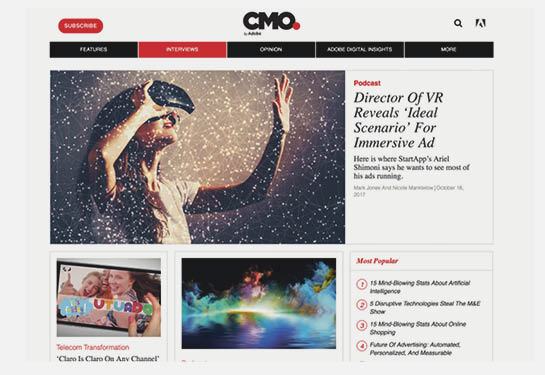No doubt you’re familiar with the Rorschach test, when psychologists analyse your state of mind through the patterns that you see in abstract inkblots. I’ve got a Rorschach test of my own for content marketers. It involves looking at the following stat and seeing how it makes you feel:
Five per cent of branded content accounts for 90 per cent of all branded content engagement.
If you’re a confident content marketer, with a clearly defined content strategy, then this statistic will neither surprise nor alarm you. You already know that there’s a huge difference between effective content and the rest. Since you’re tracking your engagement carefully and linking it back to business objectives, you’re probably pretty confident that your content is in the five per cent. If you produce content that doesn’t deliver the right levels of engagement, then you’ll know about it – and you’ll know what to do about it.
The sad fact is that there are plenty of marketers who don’t fall into this category. When they look at my Rorschach stat (from the data platform Beckon) they instead feel disappointed, angry, betrayed. They’ve been promised that when they switch budget from making ads to creating content their engagement levels will automatically go up.
Numbers like these make them feel they’ve been sold down the river.
The most worrying stat about the current state of content marketing isn’t that big discrepancy between the five per cent and the 95 per cent. It’s the latest research from the Content Marketing Institute (CMI) that shows 60 per cent of marketers still don’t have a documented content strategy – but despite this, 73.6 per cent of marketers plan to spend more on content in the coming year.
 This shows exactly why there’s currently such a division between the small proportion of highly effective content and the vast amount of ineffective content. Only a small proportion of marketers are taking the discipline of content seriously. There’s still a myth out there that content is just a new, trendy form of advertising that doesn’t require either specialist planning or specialist skills. There’s still a lethal perception that if you ask your advertising agency to create something longer than a traditional ad, with a bit of a story to it, you can score tons of free engagement through your audience enthusiastically sharing it for you.
This shows exactly why there’s currently such a division between the small proportion of highly effective content and the vast amount of ineffective content. Only a small proportion of marketers are taking the discipline of content seriously. There’s still a myth out there that content is just a new, trendy form of advertising that doesn’t require either specialist planning or specialist skills. There’s still a lethal perception that if you ask your advertising agency to create something longer than a traditional ad, with a bit of a story to it, you can score tons of free engagement through your audience enthusiastically sharing it for you.
It’s no wonder that 95 per cent of content struggles to make an impact.
Content marketing comes from the realisation that earning and retaining the attention of your audience is now a form of value exchange. People are less and less interested in hearing what you have to say unless what you say is rewarding to them in some way. As a content marketer you have to earn the right for audiences to give your content a chance. Then you have to earn the right for them to return to your content by making sure it delivers rewards- it entertains, it informs, it offers insights and ideas they wouldn’t have found anywhere else; it sends their dopamine levels soaring.
The best content brands invest in the skills to understand the precise type of content that an audience needs. They invest in planning sequences of content that answer those needs better and more distinctly than anything else out there. And they invest in making sure that content gets in front of the people it’s relevant for. They track, measure and optimise like crazy. They aren’t just marketers playing with content; they are content marketers. And they’re the ones creating the five per cent.
What does the content marketing five per cent look like?

It looks like Adobe’s CMO.com (above image), quite simply one of the best and most thoughtful content resources that exists for marketers; it looks like GE’s Unimpossible Missions, educational science content that’s unique, captivating, funny and distinctly GE. It looks like BNP Paribas and a content strategy that is helping to make it “the bank for a changing world”.
Creating great content isn’t easy. If it were, everybody would be doing it. Creating content that’s lightweight, derivative or just plain boring is much easier, which is why there’s so much of it around. That doesn’t have to be bad news. You just have to work hard to make sure your content is part of the five per cent — and look forward to that big share of relevant engagement that’s coming your way.
Jason Miller is the Head of Content and Social Media Marketing at LinkedIn. To hear more about his marketing solutions, click here.
If you want to create a strategy to be in the five per cent, access our full report on content marketing cut-through here.
Five per cent of branded content accounts for 90 per cent of all branded content engagement.
Numbers like these make them feel they’ve been sold down the river.

